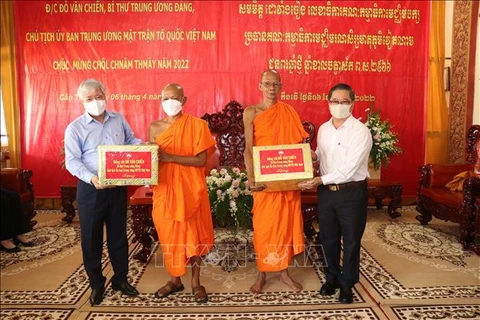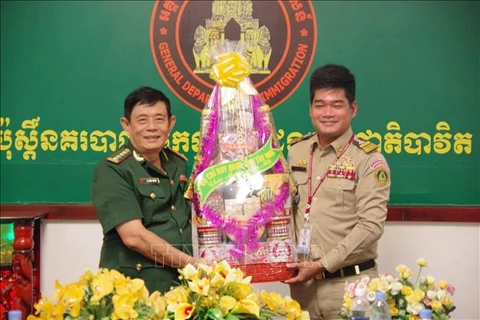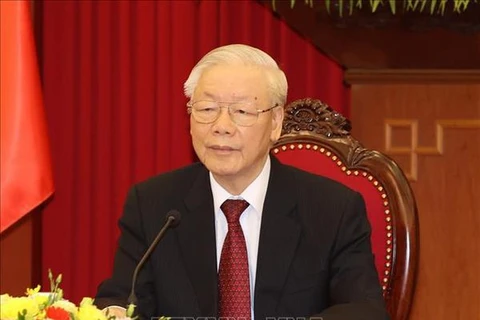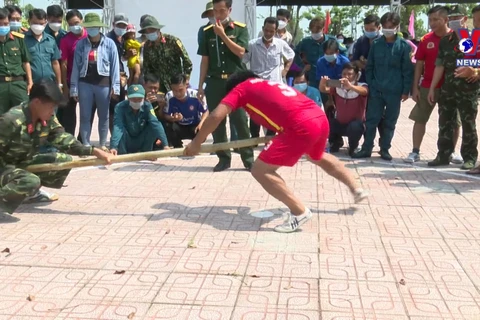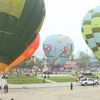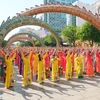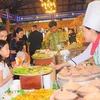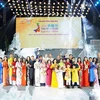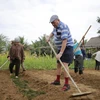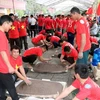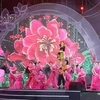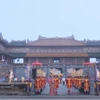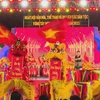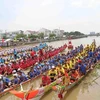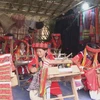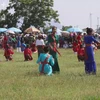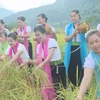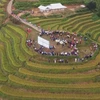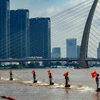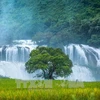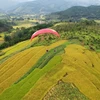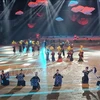 Photo: Monks and Khmer people in Phum Soc villages in Soc Trang province decorate the temple grounds to welcome the new year. (Photo: VNA)
Photo: Monks and Khmer people in Phum Soc villages in Soc Trang province decorate the temple grounds to welcome the new year. (Photo: VNA) Hanoi (VNA) - Chol Chnam Thmay New Year is the biggest festival on the Khmer calendar, which takes place around mid-April of the solar calendar every year. The festival expresses the wish for a new year of favourable rain and wind, and bountiful crops.
These days, coming to temples of the Khmer ethnic group in the south, visitors will be immersed in the bustling atmosphere to welcome the Chol Chnam Thmay traditional New Year.
According to locals, this is the time between rainy and dry seasons with lush vegetation, considered as the beginning of a favourable year. Chol Chnam Thmay Festival usually takes place around mid-April every year.
If the Thanh Minh (grave-visiting) is an occasion for Vietnamese and Chinese people to look to the past to remember their ancestors and deceased relatives, take care of and repair graves, the Khmer people celebrate the Chol Chnam Thmay to commemorate both the past and the future.
While the Vietnamese and Chinese celebrate the New Year at the end of the crop, the Khmer celebrate the New Year at the beginning of the season. This shows the Khmer belief in simple but liberal personality, optimism, and willingness to overcome difficulties, and always looking forward to the future.
The Chol Chnam Thmay is one of the festivals with bold cultural colours typical of the Mekong Delta region and also of rice farmers in Southeast Asia. Khmer people in the southern region have a festival system associated with the life cycle of rice. In particular, the community's major activities always take place in between crops.
The festival is based on the Khmer calendar, taking place in the middle of April of the solar calendar. This is the 5th month according to the Buddhist calendar but is considered by Khmer people as the first month of the year.
According to the Khmer farming calendar, farmers are nearly free during the period because it is the peak time of the dry season and harvest is done. All cultivation and animal husbandry activities are halted to wait for the rain.
As the largest festival of the year, it is held to welcome the rainy season and new crops and lasts up to 15 days. Amid the current rend to streamline festivals, it has been scaled down to three days, excluding preparatory time.
 Offering rice to the monks is among the main activities in Chol Chnam Thmay festival of the Khmer people. (Photo: VNA)
Offering rice to the monks is among the main activities in Chol Chnam Thmay festival of the Khmer people. (Photo: VNA) For the Khmer people, pagodas are sacred places and the shared house of the community. Therefore, all festivals are held at pagodas, especially Chol Chnam Thmay.
The first day is called Chol Sangkraan Thmay, the Khmer people will choose the best hour to wash themself and wear nice clothes, bringing along offerings to go to the pagodas.
On the second day called Wonbof, which will last two days in leap year, people will offer food for the monks and build a hillock of sand to pray for happiness and avoid misfortunes in the afternoon.
On the third day named Lom Sak, monks will use water infused with flowers to bathe Buddha statues. People will pray for protection, health and bumper crops.
The three days of Chol Chnam Thmay are also a time for the Khmer people from all walks of life to return to their hometowns and reunite with their families so as to celebrate the new year together. They will take the occasion to visit relatives and extend wishes to each other.
During the festival, in addition to Buddhist rituals, the Khmer people will take part in a panoply of cultural and musical activities, together with folk games such as flying kites./.
